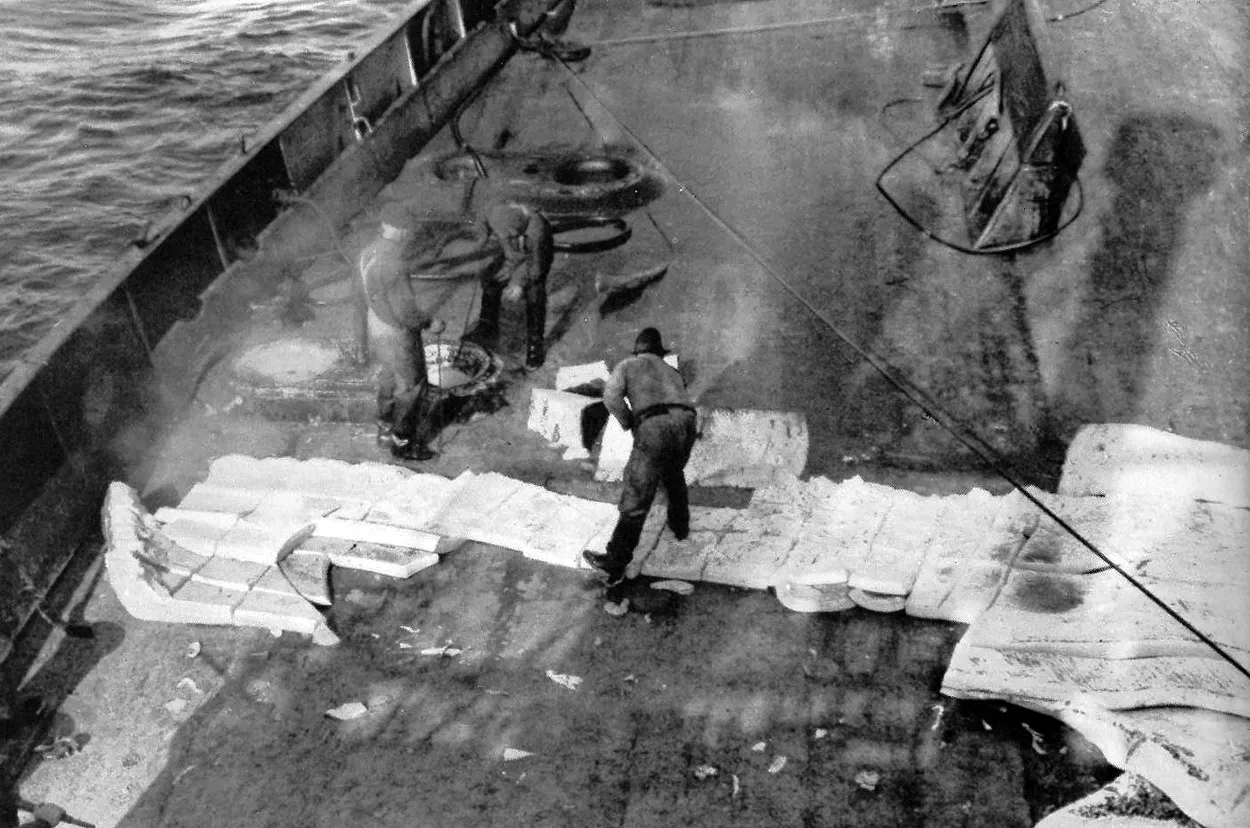Cutting up the blubber blanket for processing
Whales and Whaling pictures
Next
Previous
Back to gallery
Back to whale and whaling
thumbnails
Cutting up the blubber blanket for processing and passing to the boilers beneath the main deck.
Once removed, the blubber blanket is laid on the deck and cut into smaller pieces by another group of whalers called the "blubber boys" as in this photograph, these pieces are then passed through hole in the deck - middle, left - that pass through to the boilers and machinery to recover the oil from the tissue. First of all the blubber passes through rapidly rotating sharp blades that mince it up to smaller pieces still for a more effective use of the oil in contains. As might be expected, the blubber is very greasy and oily and so the blubber boys handle it using a blubber-hook almost as useful as a third hand to move around pieces of it.
In earlier pre-industrial whaling days, these processes would have all been carried out by hand. Manually wielded knives cut the blubber into smaller pieces which would then be cut up further fist by a hand-knife and then later on by a device with two sets of knives at right angles to each other. In any case, every part of the processing of the whale would have been a manual operation including the feeding of the blubber into the great pair of try-pots and then the ladling out again into barrels. factory ships didn't have wooden barrels, but stored the processed oil in great metal tanks. Like the oil industry today they still referred to the amount of whale oil they obtained as a figure stated in barrels.

